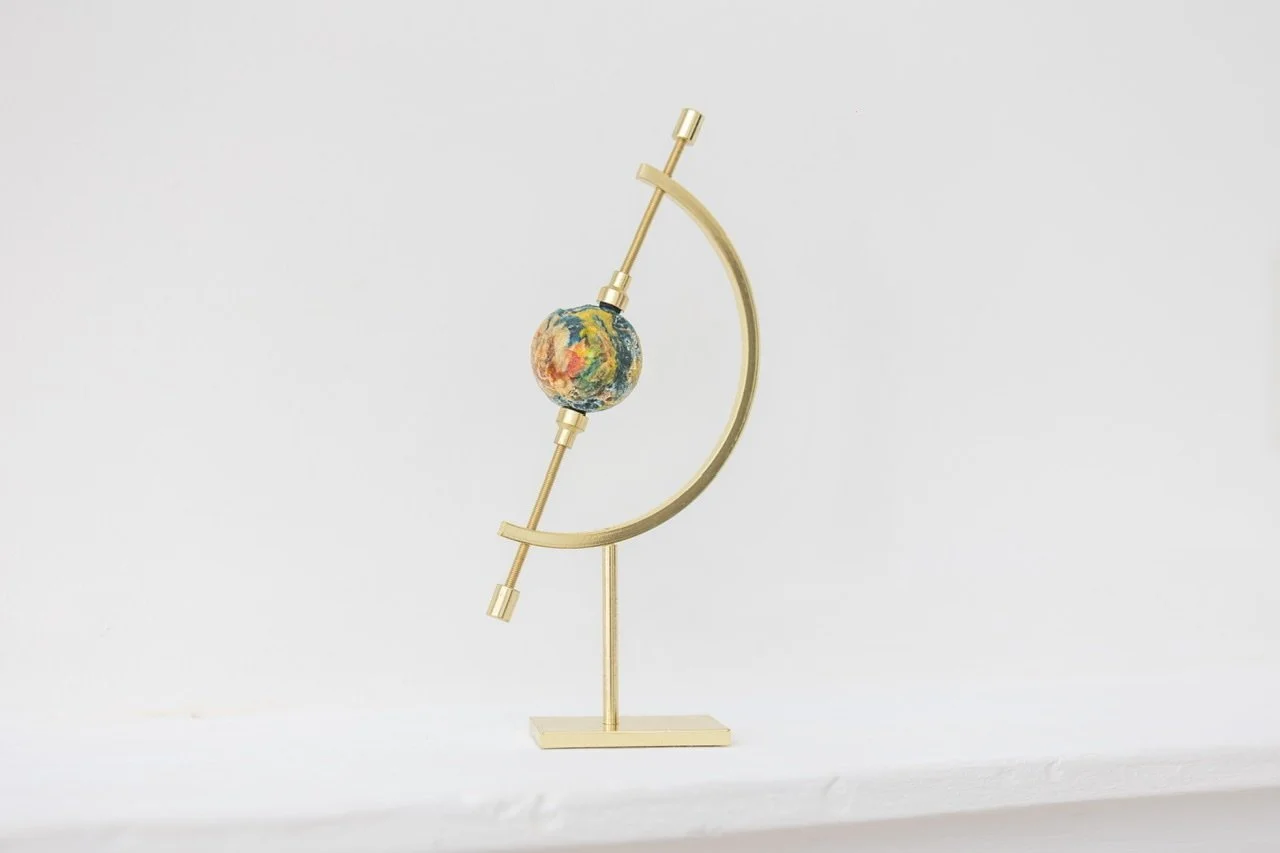ARTWORK DETAILS
David Aston
The Anthropocene Globe
Readymade, child’s rubber ball found in The Galapagos
17 H x 3 x 9 D cm
2018



“The Holocene has ended. The Garden of Eden is no more. We have changed the world so much that scientists say we are now in a new geological age - The Anthropocene - The Age of Humans.”
FURTHER DETAILS
I discovered The Anthropocene Globe on an adventure to the Galapagos islands in Feb 2018. A remote volcanic paradise separated from mainland America by 1000km of Pacific Ocean and home to the wide variety of fearless wildlife which inspired Darwin’s evolution of species.
As part of a tour of the islands we visited the southern island of Floreana. After exploring the coastline for turtles, penguins, seals and sea birds we landed and walked past flamingos to a beautiful sandy beach where green turtles laid their eggs. It was lovely to see so many fresh tracks heading up the beach and the lunar landscape of turtles nests.
Whilst there we were encouraged to collect any plastic we found to reduce pollution on the islands and the threat of turtles or marine life eating it. On the shore at Floreana I found an old crusty looking child's rubber ball.
I was immediately taken by how much the ball resembled our earth. Not the idealised earth as seen from space, a beautiful sphere with blue oceans, green landscapes and white clouds, but an unnatural earth with the lurid coloured swirls seen in satellite images of extreme weather conditions. The once perfectly round ball had been battered by rocks and nibbled by animals on its unknown journey across thousands of miles of ocean revealing its multi-coloured plastic layers.
The miniature globe immediately became a conversation piece and sparked a long conversation with a fellow passenger and scientist. It struck us as a visual metaphor for our own planet in the age of the Anthropocene. Whilst not recognised by all scientific communities, many anthropologists and scientists argue we live in the Anthropocene - the period where humans have had a significant impact on our planet’s climate and ecosystems through deforestation, mining and pollution of non-natural materials such as nuclear waste, plastic, concrete and metals.
The ball’s red centre and lurid blue and yellow outer cores represented the plastic pollution in our oceans and the extreme weather conditions our pollution now causes. The Galapagos shares its water with The Great Pacific Garbage Patch, an area of pollution that is estimated to be 1.6 million square kilometres, or 3 times the size of France. This unmanaged garbage patch gathers and breaks down into increasingly smaller micro plastics, which are eaten by marine animals and us. The very plastics seen in the decaying rib cages of seabirds in the Galapagos.
I agreed to make a work of art from these discussions and the child’s rubber ball became The Anthropocene Globe.
EXHIBITIONS
2023 - The Royal Society of Sculptors Summer Exhibition Link to RSS
2024 | Society of Scottish Artists 126th Annual Exhibition | Royal Scottish Academy | Edinburgh Link to RSA
TALKS & EDUCATION
2024 | UCL East | Knowledge exchange lab
Earthly Values - Art, Research and Co-Existence with UCL East
FURTHER READING:
David Attenborough World Economic Forum: https://www.weforum.org/agenda/2019/01/david-attenborough-transcript-from-crystal-award-speech/
National Geographic introduction to the Anthrocene: https://www.nationalgeographic.org/encyclopedia/anthropocene/
National Geographic images of The Great Pacific Garbage Patch: https://www.nationalgeographic.org/encyclopedia/great-pacific-garbage-patch/
Weather.gov satellite images of hurricane Emily. https://www.weather.gov/images/crp/events/Hurricane_Emily/bro_radar_loop.gif

